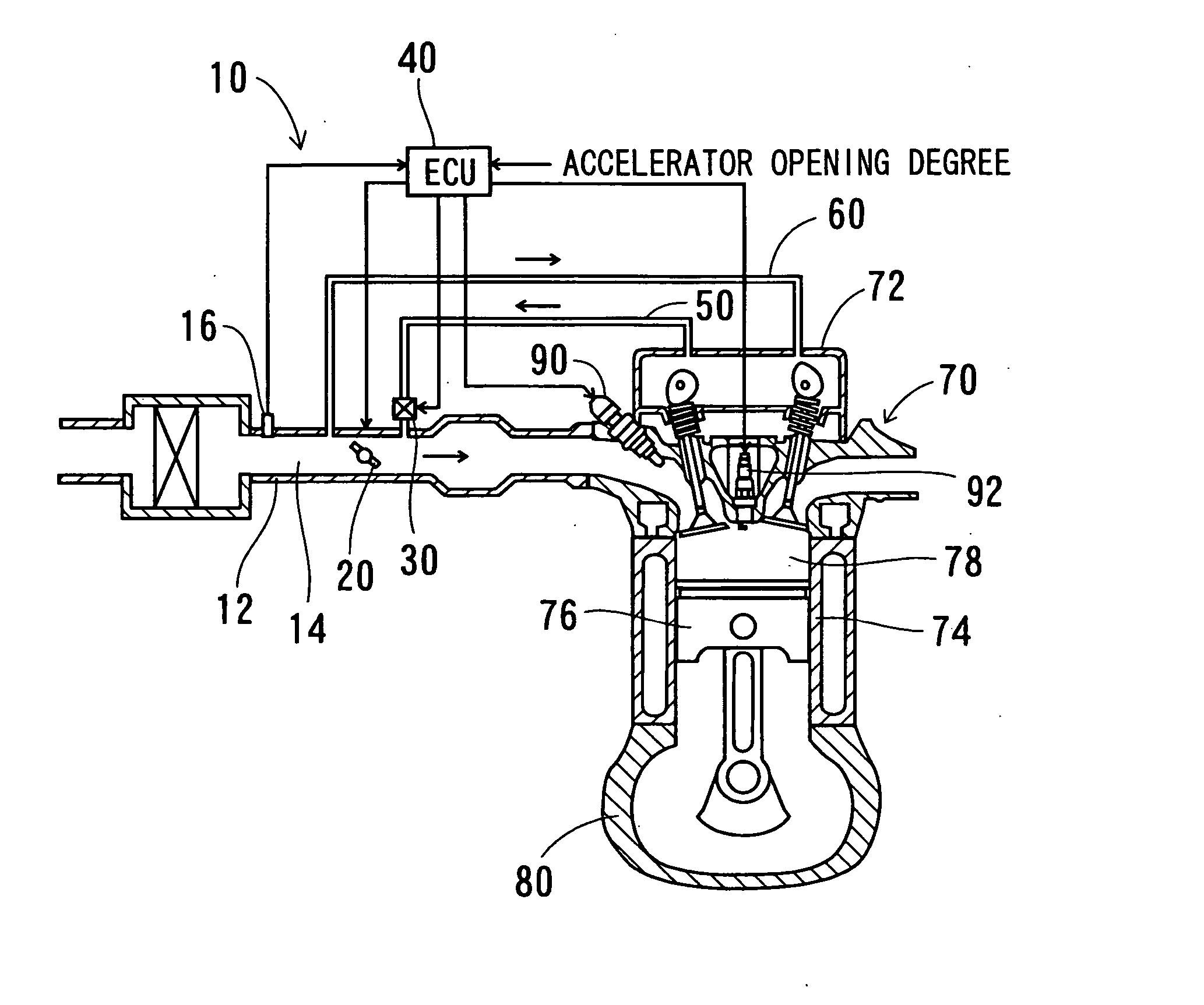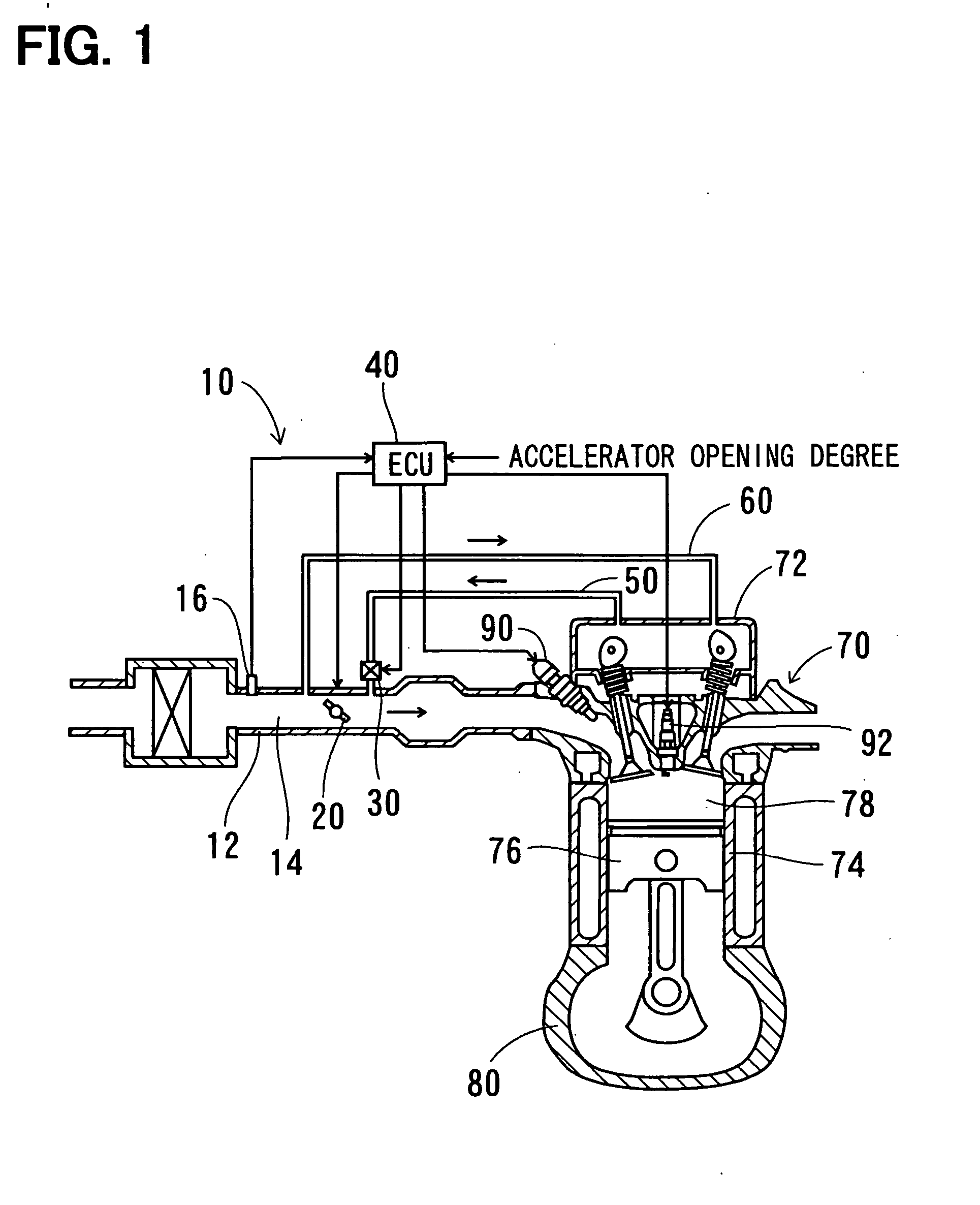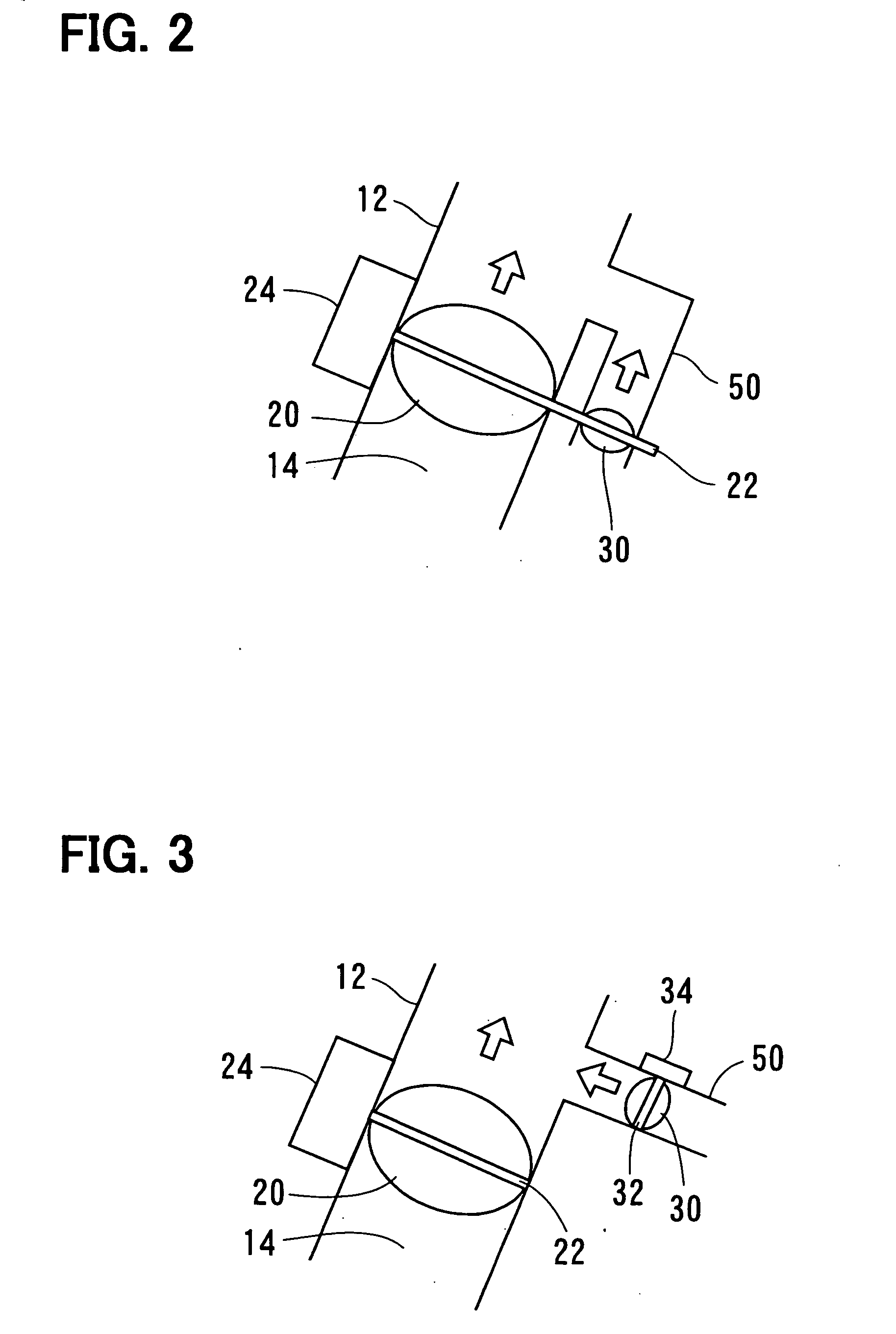Blow-by gas recirculation system
a blow-by gas and recirculation system technology, which is applied in the direction of charge feed system, non-fuel substance addition to fuel, combustion engine, etc., can solve the problems of increased pressure in the interior of the crankcase, water contained in the blow-by gas may freeze, and the increase of the blow-by gas on the downstream side of the throttle valve cannot be effectively discharged into the intake air passage, etc., to achieve the effect of limiting the exposure of the throttle valv
- Summary
- Abstract
- Description
- Claims
- Application Information
AI Technical Summary
Benefits of technology
Problems solved by technology
Method used
Image
Examples
first embodiment
[0025]FIG. 1 shows a blow-by gas recirculation system 10 according to a first embodiment of the present invention. A flow sensor 16 is provided in an intake air pipe 12 to measure an intake air flow quantity (or simply referred to as an intake flow quantity) in an intake air passage 14, which is defined by the intake air pipe 12. As shown in FIG. 2, a throttle valve 20 is rotated by a motor 24 about an axis of a rotatable shaft 22.
[0026] A PV valve (a butterfly valve) 30, which serves as a flow quantity control valve, is arranged in an outflow passage 50. As shown in FIG. 2, the PCV valve 30 is rotated by the motor 24 about the axis of the shaft 22, which is shared with the throttle valve 20. As shown in FIG. 4A, the PCV valve 30 is installed to the shaft 22 in such a manner that an opening degree of the PCV valve 30 increases in proportional to an opening degree of the throttle valve 20. A flow quantity in the outflow passage 50 is controlled according to the opening degree of the...
second embodiment
[0033] According to a second embodiment, as shown in FIG. 3, a rotatable shaft 32 of the PCV valve 30 is different from the rotatable shaft 22 of the throttle valve 20. Furthermore, the PCV valve 30 is rotated by a motor 34, which is different from the motor 24 of the throttle valve 20. The ECU 40 controls rotation of the motor 34 in such a manner that the opening degree of the PCV valve 30 increases in response to an increase in the opening degree of the throttle valve 20.
[0034] According to the second embodiment, the PCV valve 30 has the rotatable shaft 32, which is different from the rotatable shaft 22 of the throttle valve 20, and is rotated by the motor 34, which is different from the motor 24 of the throttle valve 20. Thus, as shown in FIGS. 4B-4F, the opening degree of the PCV valve 30 can be controlled in various ways with respect to the throttle opening degree, the intake air flow quantity or the load of the engine (or simply referred to as an engine load). Specifically, i...
third and fourth embodiments
[0035]FIG. 5 shows a third embodiment of the present invention, and FIG. 6 shows a fourth embodiment of the present invention. In the following description, components similar to those of the above embodiments will be indicated by the same numerals.
[0036] In a blow-by gas recirculation system 100 of the third embodiment shown in FIG. 5, a PCV valve 102, which serves as a flow quantity control valve, is a differential pressure regulating valve. A choke 62 is formed in the inflow passage 60, so that even though the passage cross sectional area of the outflow passage 50 and the passage cross sectional area of the inflow passage 60 are the same, a pressure loss of the outflow passage 50 is made smaller than a pressure loss of the inflow passage 60 at the time of fully opening the PCV valve 102. Thus, even in the case where the throttle opening degree is relatively large, and the negative pressure in the portion of the intake air passage 14, which is located on the downstream side of th...
PUM
 Login to View More
Login to View More Abstract
Description
Claims
Application Information
 Login to View More
Login to View More - R&D
- Intellectual Property
- Life Sciences
- Materials
- Tech Scout
- Unparalleled Data Quality
- Higher Quality Content
- 60% Fewer Hallucinations
Browse by: Latest US Patents, China's latest patents, Technical Efficacy Thesaurus, Application Domain, Technology Topic, Popular Technical Reports.
© 2025 PatSnap. All rights reserved.Legal|Privacy policy|Modern Slavery Act Transparency Statement|Sitemap|About US| Contact US: help@patsnap.com



